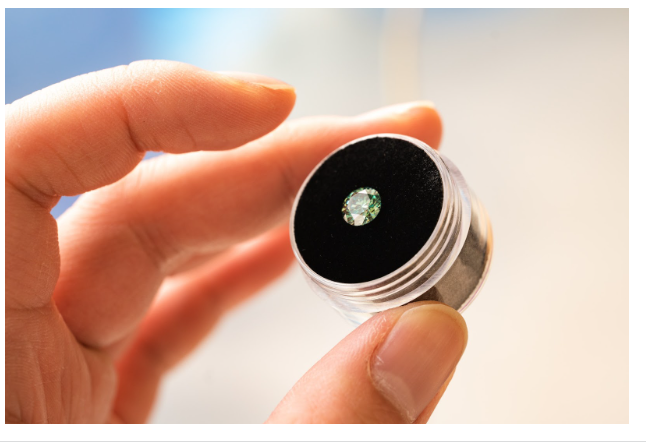Get Back on Your Feet: Physiotherapy After a Sports-Related Concussion

Sports physiotherapy for concussion involves a multi-faceted approach aimed at safely managing the symptoms and promoting recovery following a concussion sustained during sports activities. It’s important to note that every concussion is unique; thus, treatment plans should be tailored to the individual athlete’s needs and guided by ongoing assessment and reassessment of symptoms and progress. Sports physiotherapy in Grande Prairie adheres to established guidelines and measures to safeguard the safety and welfare of the athlete.
What is Concussion, and How Does it Affect Athletes?
A sports-related concussion is a mild traumatic brain injury that commonly happens due to an impact or blow to the head or body, causing swift movement of the brain within the skull. This sudden movement can disrupt normal brain function, leading to various symptoms, including headache, dizziness, confusion, and sensitivity to light and sound.
Athletes affected by concussions may experience impairments in balance, coordination, cognition, and mood, which can impact their capacity to participate in sports and daily activities. The causes of sports-related concussions vary but commonly include collisions with other players, falls, or impacts with equipment.
Additionally, repetitive subconcussive hits, like those experienced in contact sports such as football or soccer, can also contribute to the development of concussion symptoms over time.
How Physiotherapy Helps Athletes After a Sports-Related Concussion?
Physiotherapy after a sports-related concussion is a crucial component of the rehabilitation process, aiming to help athletes recover safely and efficiently. Here’s how physiotherapy typically proceeds after a concussion:
1. Symptom Management:
Physiotherapists provide strategies to manage concussion symptoms like headaches, dizziness, nausea, and heightened sensitivity to light and sound. They may recommend rest, relaxation techniques, and modifications to daily activities to help alleviate symptoms during the acute phase of recovery.
Relaxation Techniques:
Sports physiotherapists may teach relaxation techniques like deep breathing exercises, progressively relaxing muscles, and mindfulness meditation to help alleviate stress and tension, which can contribute to headaches and other symptoms.
Cervicogenic Headache Management:
Some athletes may experience cervicogenic headaches, which originate from the neck. Sports physiotherapy in Grande Prairie uses manual therapy techniques like soft tissue mobilization, joint mobilization, and cervical spine manipulation to alleviate neck pain and headaches.
2. Balance and Vestibular Rehabilitation:
Many athletes experience balance deficits and vestibular dysfunction following a concussion. Physiotherapists prescribe exercises to improve balance, proprioception, and vestibular function, helping athletes regain their stability and reduce the risk of falls or re-injury.
Vestibular Rehabilitation Exercises:
These exercises aim to improve vestibular function and reduce symptoms such as dizziness, vertigo, and imbalance. Examples include:
- Canalith repositioning maneuvers: Specific maneuvers such as the Epley maneuver or Semont maneuver may be used to reposition displaced calcium carbonate crystals in the inner ear, alleviating symptoms of benign paroxysmal positional vertigo (BPPV).
- Vestibulo-ocular reflex (VOR) exercises: These exercises involve rapid head movements combined with visual fixation to improve the coordination between the vestibular and ocular systems.
3. Visual Rehabilitation:
Visual disturbances are common after a concussion and can impact an athlete’s ability to perform visually demanding tasks required in sports. Physiotherapists incorporate visual rehabilitation exercises to address issues such as blurry vision, double vision, eye tracking problems, and light sensitivity.
Visual Tracking Exercises:
These exercises aim to improve the athlete’s capacity to follow moving objects with smooth and precise visual tracking, which is essential for many sports activities. Examples include:
- Smooth pursuit exercises: Following a moving target with the eyes while minimizing head movements.
- Optokinetic exercises: Watching a moving visual stimulus (e.g., rotating drum with stripes) to stimulate visual tracking reflexes.
4. Neck Rehabilitation:
Neck injuries often co-occur with concussions and can contribute to ongoing symptoms such as headaches and dizziness. Physiotherapists may prescribe exercises to improve neck strength, mobility, and posture, which can help alleviate symptoms and promote recovery.
Neck Mobility Exercises:
Improving neck mobility can enhance range of motion and flexibility, minimizing stiffness and tension in the neck muscles. Examples include:
- Neck stretches: Gentle stretches targeting the neck muscles in different directions (e.g., flexion, extension, lateral flexion, rotation).
- Cervical range of motion exercises: Performing controlled movements of the neck through its full range of motion in different planes (e.g., nodding, side-to-side tilting, rotation).
5. Cognitive Rehabilitation:
Cognitive deficits like memory problems, difficulty concentrating, and slowed processing speed can occur after a concussion. Physiotherapists may recommend cognitive rehabilitation exercises and strategies to help athletes improve their cognitive function and promote a safe return to academic and athletic pursuits.
Cognitive Motor Integration Exercises:
These exercises involve integrating cognitive tasks with specific motor movements to improve coordination, attention, and balance. Examples include:
- Performing balance exercises while following verbal or written instructions to change direction or perform specific movements.
- Incorporating reaction time drills (e.g., catching a ball, responding to visual or auditory cues) into balance training sessions.
6. Education and Counseling:
Throughout the rehabilitation process, physiotherapists provide education and counselling to athletes, coaches, and parents about concussion management, including the importance of rest, gradual return to activity, and injury prevention strategies. They also offer guidance on proper technique, equipment use, and recognition of warning signs for future concussions.
Role-Playing and Simulation Exercises:
Role-playing and simulation exercises allow athletes, coaches, and parents to practice communication skills, decision-making, and problem-solving in concussion-related scenarios. Sports physiotherapists facilitate these exercises to enhance participants’ confidence and competence in managing concussions effectively.
A Comprehensive Approach to Athlete Health:
Sports physiotherapy in Grande Prairie plays a vital role in the complete concussion management and rehabilitation of individuals following a sports-related concussion. GP Pain Physiotherapy in Grande Prairie aims to address the diverse array of symptoms and functional deficits that can arise post-concussion. By tailoring concussion treatment plans to each individual’s specific needs, symptoms, and goals, physiotherapists help facilitate a safe and effective return to sport and daily activities while minimizing the risk of long-term complications. Sports injury physiotherapy aims to reduce the likelihood of future concussions and other sports-related injuries, promoting the overall health and well-being of athletes.


